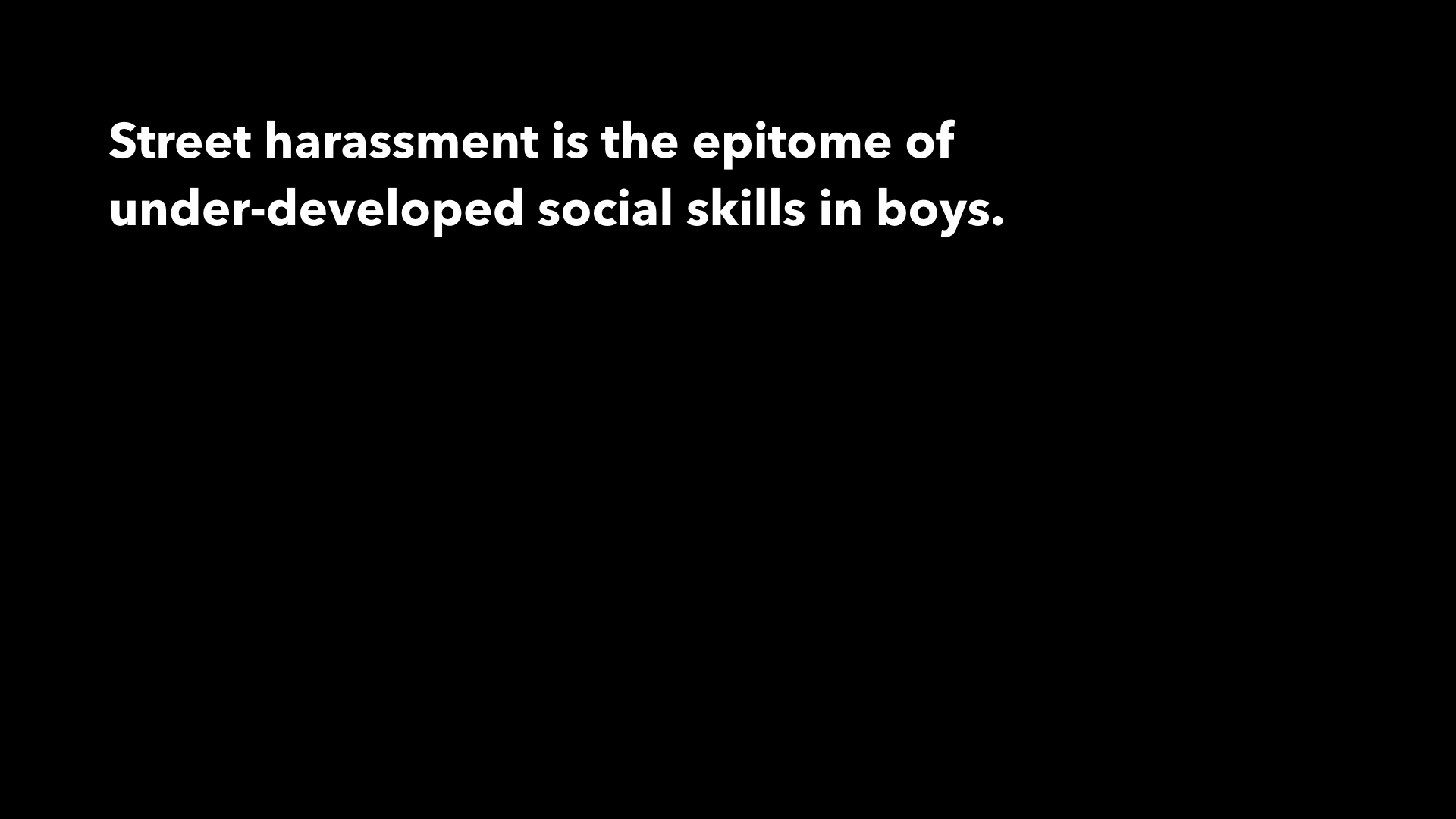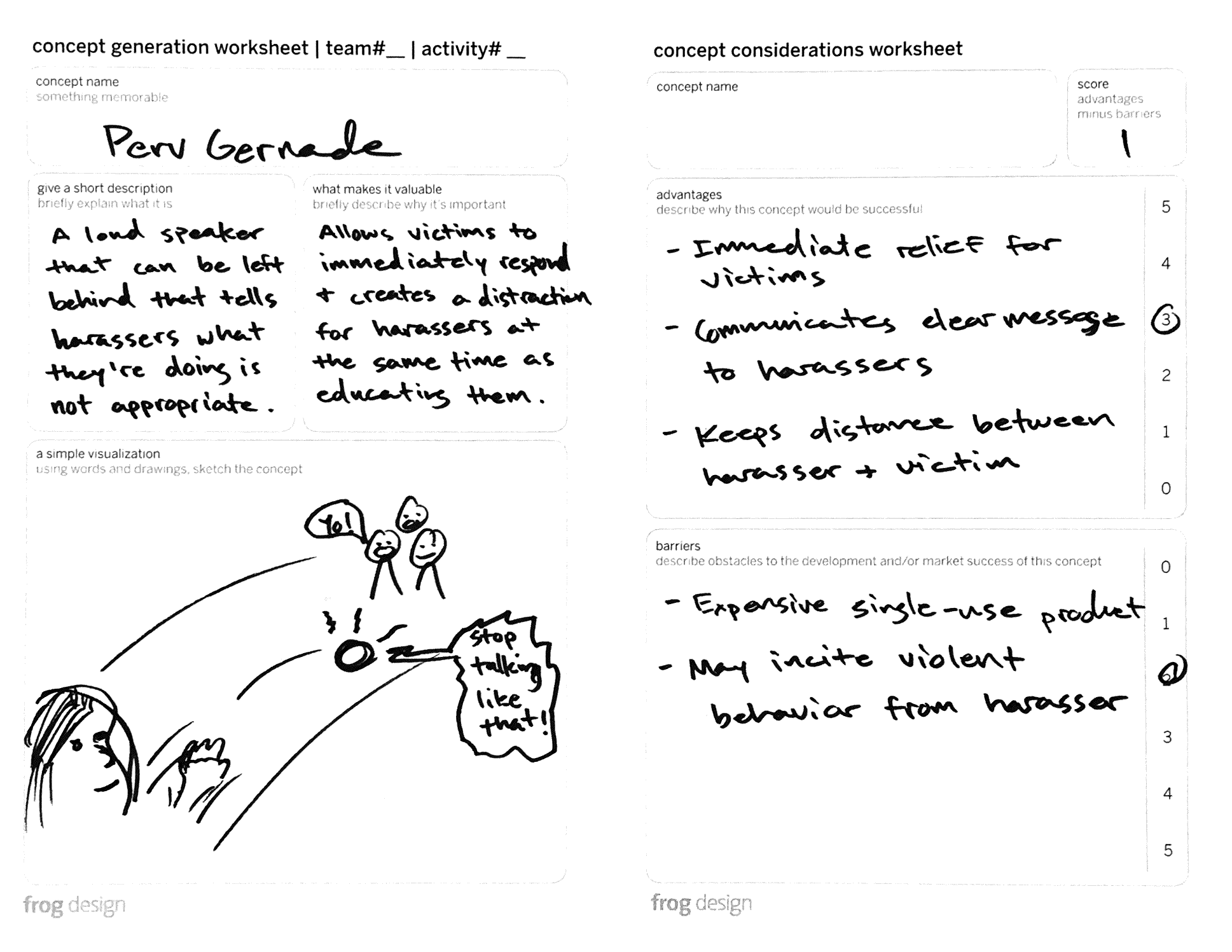Social Sustainability | Stopping Street Harassment
I didn’t know my own ignorance…
You might have all seen the same video I saw. It went viral last year. A young woman walks through NYC, doesn’t say a word, and is harassed over a hundred times in ten hours.
I was stunned. I couldn’t believe it. I walked into school desperate to show everyone how terrible things were over there in NYC, but the reaction of the ladies sitting in the room left me literally unable to finish another word. They told me this was no big deal. They deal with the same thing all the time.
ARE YOU KIDDING ME?!
This is 2015 and my daughters are going to grow up being victimized in public spaces!
Sure, I see it in movies and tv, but how could I have been so ignorant to not realize this is the reality for girls on our streets right now.
“Gender-based street harassment is unwanted comments, gestures, and actions forced on a stranger in a public place without their consent and is directed at them because of their actual or perceived sex, gender, gender expression, or sexual orientation.”
stopstreetharassment.org
“Studies show that between 70-99% of women experience street harassment at some point during their lives.”
stopstreetharassment.org
JUST STOP!
It’s not appropriate. It’s not going to get you what you want. It damages people.
“Initial emotions of anger, fear and anxiety from street harassment show they lead to long term effects of depression and low self esteem.”
ihollaback.org/cornell-international-survey-on-street-harassment/#cr
My goal
I want to help boys chose a more positive way than harassment on the streets to communicate with girls, by providing them with the tools to build strong empathetic skills.
What I learned from the data
1. Very literally, street harassment begins with victimizing children.
2. The damage of street harassment is both short-term and long-term.
3. Bystanders, in general, are nonreactive when witnessing incidents.
4. Damage from the harassment is thwarted when victims speak out, either directly to the harasser, or to supporters.
5. If the well-being of its community members is not motivation enough for a community to address the issue, the effect it has on the economy should be considered.
What I learned from interviews
Interviewee Demographics
- 4 females
- 1 African-American, 1 Latin-American, 2 White
- All 20-25 years old
- All in college
- 2 live in San Francisco, 2 live in the East Bay
1. Coping for victims of street harassment is pretending it is not reality.
2. Street harassment is not only a focus on grown women, it is what is happening to our children.
3. Street harassment is the epitome of under-developed social skills in our community members even though harassers can appear to be fully functioning citizens.
4. The frequency of street harassment makes it an accepted part of the lives of these victims.
5. The victims of street harassment, while outwardly ignoring or quickly dismissal of the experiences, do not forget who, when, or where.
6. Victims of street harassment struggle with the question of whether their clothing choice is equivalent to universal permission to harassment and rape.
7. Some harassers appear to have no clue that street harassment is not a good way to approach individuals.
8. Victims of street harassment either very aggressively react to harassers, or quickly dismiss the experience by laughing it off.
What this means for my design intervention
1. Strengthening victims may be by focusing on support from the community, or it could be in safely confronting the harassers.
2. The effects of the harassment will be deeply rooted from victims being harassed since their pre-teen years.
3. Traveling in numbers is not a sufficient approach for an intervention to the issue, as harassers seem to not be deterred by groups.
4. Three of the participants are non-conformational by nature to the harassers.
5. If the intervention is a reaction directed to the harassers it needs to account for their indifference of socially acceptable behavior.
6. The intervention needs to redirect the blame from the victims to the harassers.
7. Harassers are unpredictable, so any confrontational approach needs to be carefully developed.
8. The design may have to reverse the de-sensitization of victims of street harassment.
Mapping the experience
A few ideas
Trying a couple ideas out
Final Concept
Infiltrating the education industry










































